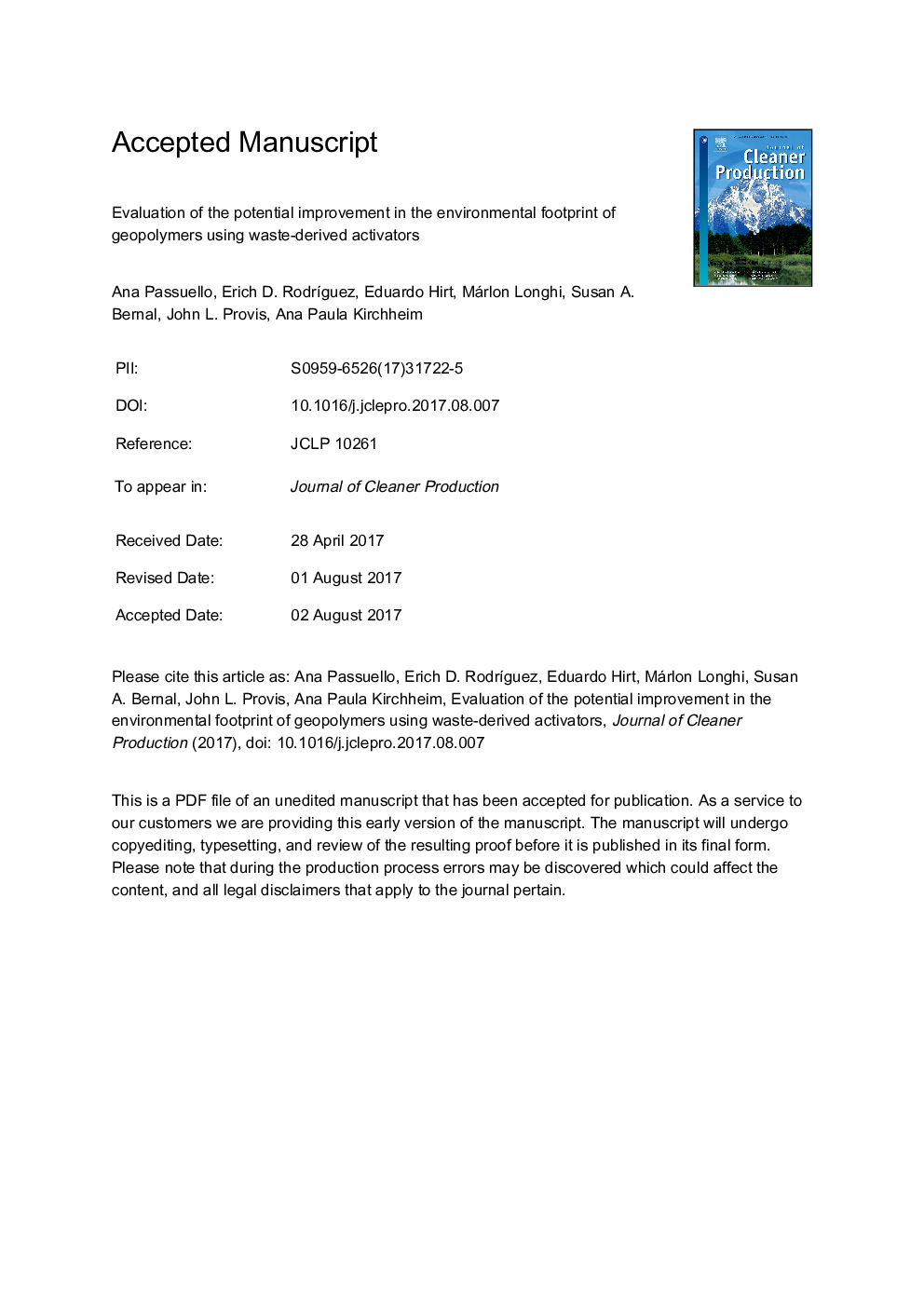| کد مقاله | کد نشریه | سال انتشار | مقاله انگلیسی | نسخه تمام متن |
|---|---|---|---|---|
| 5479941 | 1522088 | 2017 | 34 صفحه PDF | دانلود رایگان |
عنوان انگلیسی مقاله ISI
Evaluation of the potential improvement in the environmental footprint of geopolymers using waste-derived activators
ترجمه فارسی عنوان
ارزیابی بهبود بالقوه در محدوده زیست محیطی ژئوپلیمرها با استفاده از اکتشافات حاصل از زباله
دانلود مقاله + سفارش ترجمه
دانلود مقاله ISI انگلیسی
رایگان برای ایرانیان
کلمات کلیدی
موضوعات مرتبط
مهندسی و علوم پایه
مهندسی انرژی
انرژی های تجدید پذیر، توسعه پایدار و محیط زیست
چکیده انگلیسی
Geopolymers produced from an aluminosilicate precursor and an alkaline activating solution have emerged as low carbon alternative binders which can substitute for Portland cement (PC) in many applications. The presence of soluble silicate in the activating solution of a geopolymer is known to yield a denser and more compact material with higher mechanical strength compared to hydroxide-activated geopolymers. However, these silicate solutions are the most expensive component of geopolymer cements, as well as the highest contributors to their environmental impacts in most life cycle categories. Geopolymers are widely accepted as a more environmental friendly material due to their claimed lower CO2 emissions due to their synthesis from industrial by-products or wastes, as well the low energy demand during their production. However, the use of alkali-silicate activators can significantly increase other environmental impacts, leading to controversies regarding whether geopolymers can really be considered as a more sustainable material. Thus, this study evaluates the life cycle impacts of a geopolymer produced from a kaolin sludge residue from the Brazilian mining industry. Alkaline solutions derived from sodium hydroxide solutions and two different soluble silica sources were used as activators: a commercial sodium silicate (waterglass), and chemically modified rice husk ash (RHA). The processes which contribute the most to the life cycle impacts of geopolymers are thermal curing, waterglass production, and sodium hydroxide production. The use of RHA-derived sodium silicate may reduce environmental impacts by more than 60% in 6 of the 9 categories assessed, indicating that this is a favourable alternative where RHA is locally available. Although the binders evaluated here have differences in mechanical properties, those using RHA-derived activators exhibit impacts lower than PC for 4 of the 8 categories evaluated, and a reduction of more than 70% in global warming potential. RHA-based activators are identified as a promising alternative for impact reduction in geopolymer production, and more detailed assessments of the performance and reactivity of these activators should be conducted.
ناشر
Database: Elsevier - ScienceDirect (ساینس دایرکت)
Journal: Journal of Cleaner Production - Volume 166, 10 November 2017, Pages 680-689
Journal: Journal of Cleaner Production - Volume 166, 10 November 2017, Pages 680-689
نویسندگان
Ana Passuello, Erich D. RodrÃguez, Eduardo Hirt, Márlon Longhi, Susan A. Bernal, John L. Provis, Ana Paula Kirchheim,
